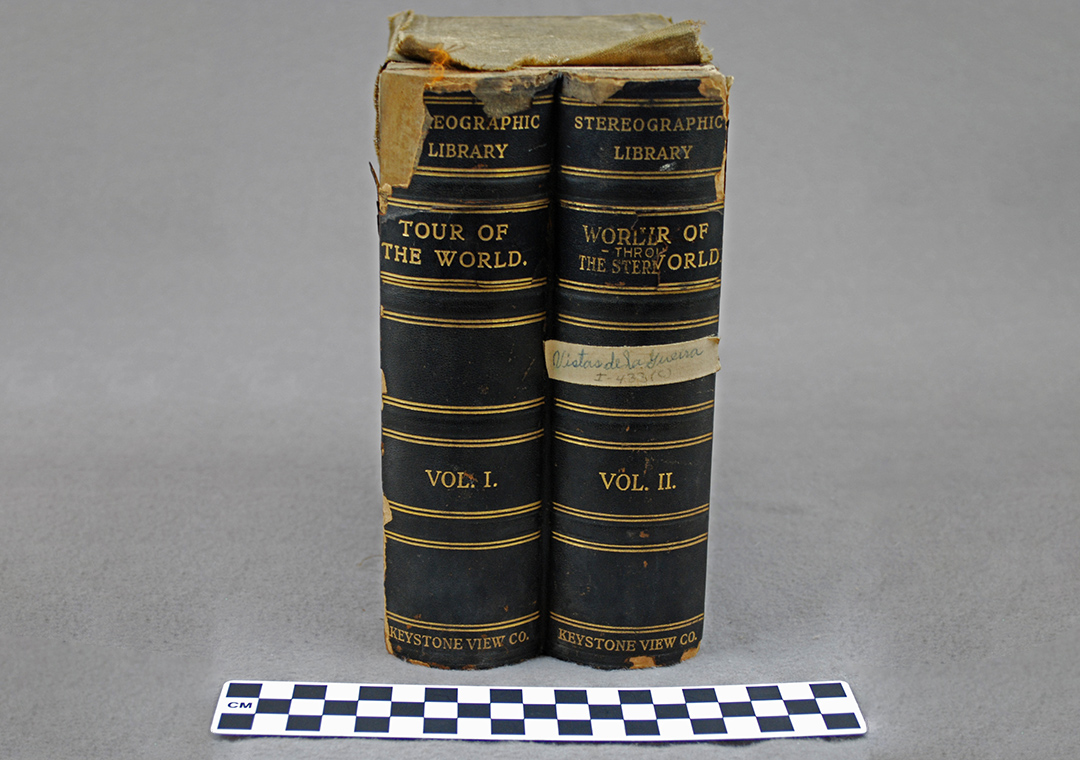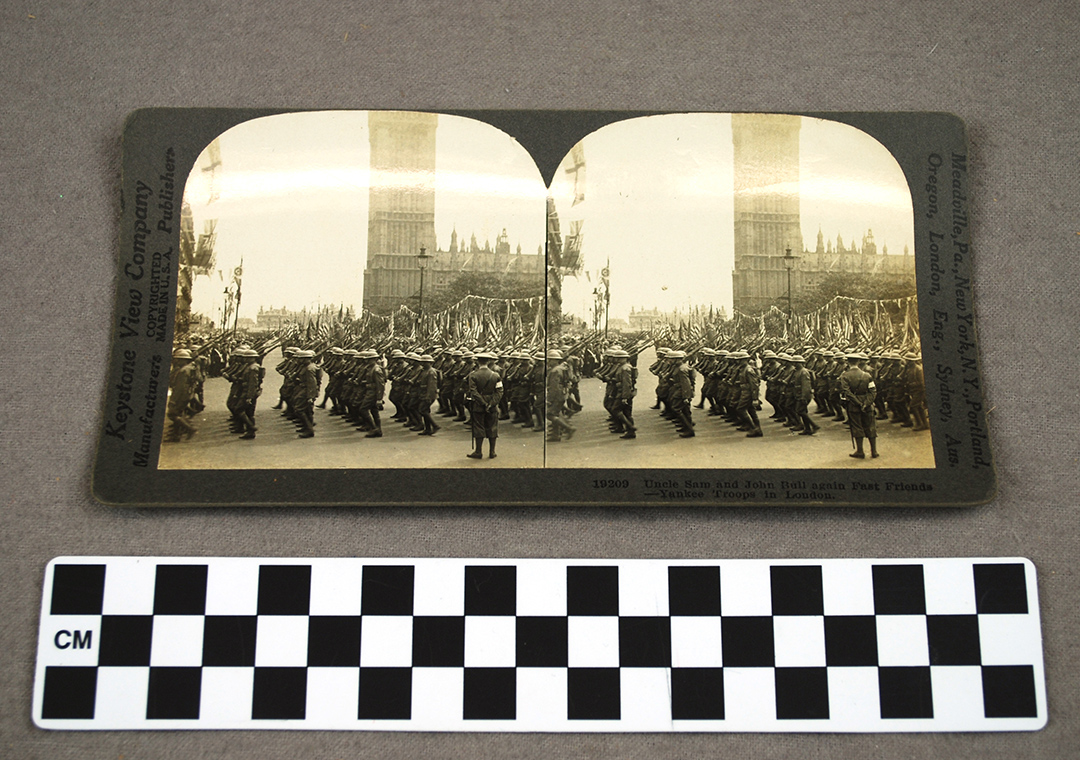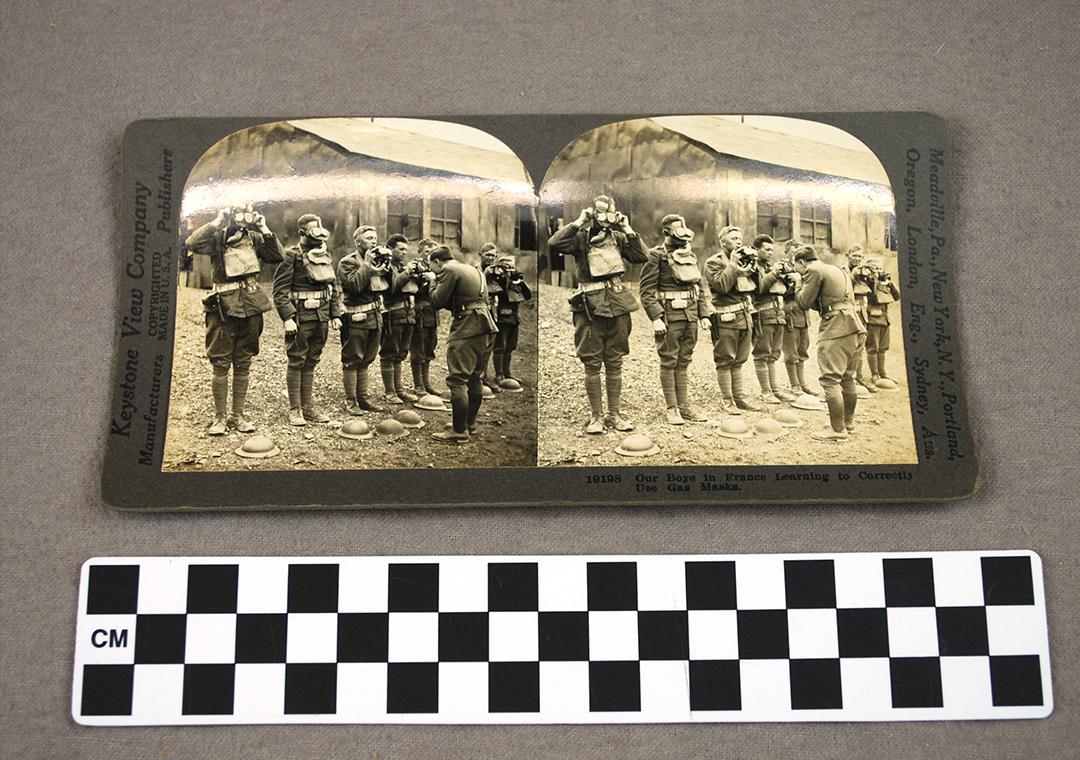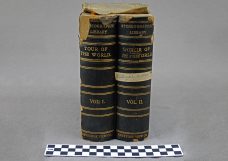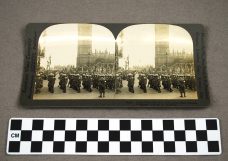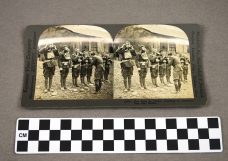This object is a collection of stereograph slides showing images of World War I. A stereograph is a photograph, produced by a camera with two lenses. The camera takes each photo at slightly different angles, which mimics the parallax of human eyes. When viewed through the stereoscope the scenes appear to be three-dimensional. These stereographs contain different scenes from WWI era. This slide album contains 95 of the original 100 slides in the collection. The slides are stored inside a cardboard case made to look like two bound books. On the spine of case the words “Tour of the World” Vol. 1 and 2. These slides however, are not part of the “Tour of the World” collection but are part of “The World War through the Stereoscope.” Each slide has two photographs on one side with the title and copyright information. On the other side is a lengthy description of the image. This collection was one of 4 sets produced, starting in 1923, by the Keystone View Company. The stereographs are in chronological order to be able to tell a compressive story of the war and its aftermath.
The stereograph was first introduced to the public in England in 1851. It was the Langenheim Brothers who brought the process to the United States and began to sell stereographic images. To view the stereographs a device called a stereoscope was used. There were many versions of the stereoscope, but one of the most popular was designed by Oliver Wendell Holmes in the mid 1800’s. Viewing an image through the stereoscope was different from viewing a regular photo that was printed for a newspaper or a portrait. To view these images, people held the stereoscope up to their eyes, shutting out everything around them but the photographed scene. The resulting three dimensional image was then magnified, filling the entire field of view.
World War I was not the first American war in which stereographic images were used. The American Civil War also produced a large number of extremely popular stereographs. However, the popularity of war photographs usually faded after the war. World War I photographs were the exception. Demand for those images remained high, up to a decade after the war had ended. However, during World War I bringing the images of the war to the public had many challenges. One of the challenges was access to the battlefields, many photographers were denied access to war-zones. Another challenge were the censorship codes that many governments had set up. These censorship codes were used to ensure that sensitive information about the war was not being released to the public where it could also be accessed by the enemy. Some of the only photographers allowed to accompany the troops into battle were from the Army Signal Corps. However, even these soldiers also had to follow certain codes to be sure to not to give away information to the enemy. The censorship codes and access issues resulted in some of the largest battles of the war never being reported on. The photographs that were being circulated lacked the sense of the actual horror and realism of the war. It was not until the armistice was signed that photography was able to offer a better understanding of the scope of the war. The photographs, although not graphic, did show the destruction caused by the war. Many of the photographs consisted of fields, and buildings.
The stereographs of World War I were popular until right before World War II. Photography of war continues to be popular even today. One can look at these images and study the way in which the reporting of war has changed. The stereograph and stereoscope, a popular form of mass media for the time, can be used to study the impact images have on a culture.
